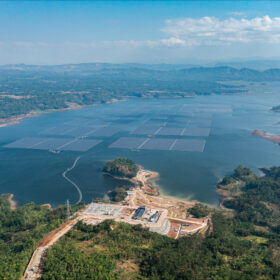Daikin launches air-to-water heat pumps for single-family homes
Daikin has released a line of residential heat pumps, using propane (R290) as the refrigerant, with outdoor unit dimensions of 1,122 mm x 1,330 mm x 600 mm. The new products have an output ranging from 6 kW to 14 kW and can reportedly deliver hot water up to 75 C.
Chinese PV Industry Brief: Stable silicon, wafer prices with minor variations
TrendForce says silicon material and wafer prices stayed mostly stable this week, while Longi Green Energy has signed a strategic deal with China Energy Construction for green energy projects.
Patents to add AI to power grids are surging, says IEA
New patents to integrate artificial intelligence into global grids have grown sixfold over the past few years, with China driving overall innovation momentum. The European Patent Office, co-authors of the report, called for Europe to renew its efforts.
Indonesian think tank says nation at crossroads with energy transition
The Jakarta-based Institute for Essential Services Reform (IESR) says 2025 will be a pivotal year for Indonesia’s energy transition, as the nation has fallen behind targets in recent years. It seeks to shift fossil fuel subsidies to renewables and is urging the government to implement a clear, measurable plan for the upcoming national energy policy.
Active typhoon season, monsoons split Asia’s November irradiance
In a new weekly update for pv magazine, Solcast, a DNV company, reports a stronger-than-usual end to typhoon season that delivered mixed levels of solar irradiance across Asia in November.
Hithium unveils 6.25 MWh BESS, sodium-ion battery cell, installation-free home microgrid
A trifecta of cutting-edge products debuted at Hithium’s second Eco Day event held in Beijing on Thursday.
PowerChina wraps up record 102 GW solar equipment procurement tender
China Power Construction Corp. (PowerChina) says it has concluded the largest procurement tender in solar industry history, involving 51 GW of PV modules and 51 GW of inverters. The tender results, published on Nov. 13, set a new record for scale and industry involvement.
Waaree Energies, IIT Bombay collaborate to drive perovskite solar R&D
Waaree Energies says it has agreed to support IIT Bombay in creating an advanced fabrication and characterization setup to develop high-efficiency perovskite solar cells.
Testing rigid connectors in floating photovoltaics
New research from China shows that using rigid connectors instead of polyester ropes in floating photovoltaic arrays may help reduce the relative motion of floats and simplify the layout of the connection system.
Cooling PV modules with lauric acid and nanoparticles
Thai researchers developed three organic phase-change material (PCM) mixtures with nanoparticles to cool PV modules and improve efficiency. They used lauric acid blended with aluminum oxide, copper oxide, and magnesium oxide in an optimal 94:6 weight ratio, boosting module efficiency by up to 14.11%.










